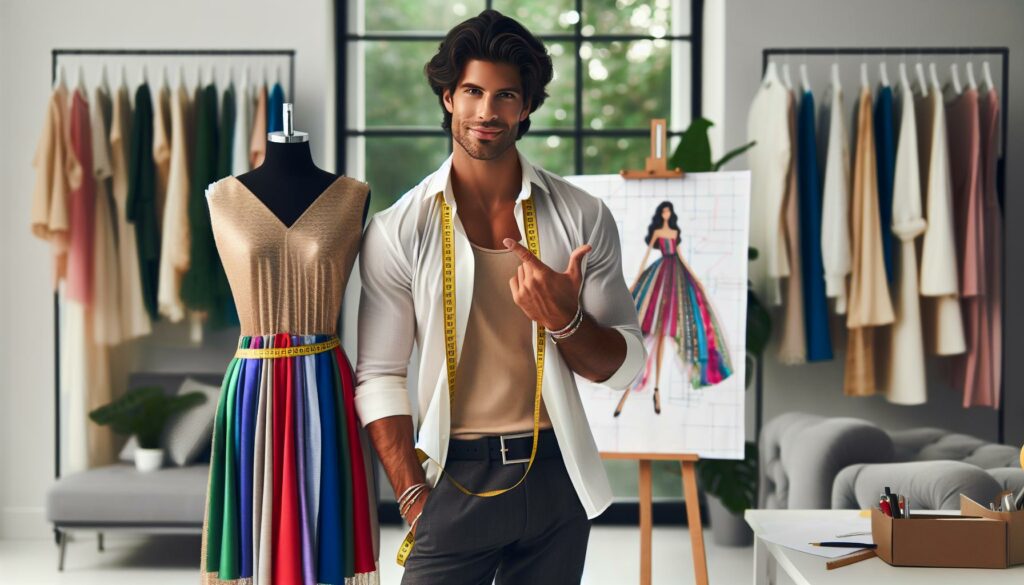Fashion design and merchandising isn’t just about creating fabulous outfits; it’s an art form that blends creativity with strategy. Imagine a world where your wildest fashion dreams come to life, and you get to be the mastermind behind it all. From sketching the next big trend to figuring out how to sell it, this dynamic field is where imagination meets the marketplace.
Fashion Design and Merchandising
Fashion design and merchandising represent interconnected realms within the fashion industry. Fashion design involves the creation of clothing, accessories, and footwear that reflect current trends and artistic visions. Designers focus on innovative styles and use various materials to bring their concepts to life. Collaboration among design teams fosters unique collections through shared insights and creativity.
Merchandising, on the other hand, deals with bringing these designs to market. Retail strategies and consumer preferences play a critical role. Effective merchandising involves understanding market analysis, pricing strategies, and inventory management. It contributes directly to sales performance and brand success.
The synergy between fashion design and merchandising drives the retail cycle. Designers and merchandisers work together to anticipate trends, ensuring that collections are timely and relevant. Consumer behavior influences both aspects, requiring ongoing market research and adaptation.
In terms of education, numerous programs offer degrees in fashion design, merchandising, or a combination of both. These programs often incorporate practical experience, providing students with insights into the industry’s dynamics. Internships and hands-on projects enhance understanding of the design production process and merchandising strategies.
Ultimately, the fashion industry thrives on creativity and strategic planning. Trends shift rapidly, making adaptability essential. Many successful professionals navigate their careers by blending design skills with merchandising knowledge, optimizing their impact on the market.
Key Concepts in Fashion Design

Fashion design encompasses various key concepts that influence creativity and marketability. Understanding these concepts enhances the ability to create appealing collections and effective marketing strategies.
Elements of Fashion Design
Elements of fashion design include color, texture, shape, and silhouette. Color selection impacts emotional responses and brand identity. Texture adds depth and interest, influencing how fabrics are perceived. Shape defines the overall form of garments, while silhouette creates visual balance and impact. Designers blend these elements to craft cohesive and compelling designs that resonate with consumers.
Principles of Fashion Design
Principles of fashion design focus on harmony, balance, proportion, and emphasis. Harmony ensures that all design elements work together cohesively. Balance provides stability, whether through symmetrical or asymmetrical arrangements. Proportion refers to the relationship between various design elements, affecting visual appeal. Emphasis highlights specific features, guiding consumer attention. By applying these principles, designers create garments that are visually striking and commercially viable.
The Role of Merchandising in Fashion

Merchandising acts as a bridge between fashion design and retail, ensuring designs reach consumers effectively. It encompasses various functions that maintain market relevance and consumer engagement.
Types of Fashion Merchandising
Different types of fashion merchandising include visual merchandising, product merchandising, and retail merchandising. Visual merchandising focuses on enhancing store displays to attract customers. Product merchandising emphasizes selecting and presenting the right products to optimize sales. Retail merchandising involves strategies that promote effective product placement and inventory management. Each type plays a crucial role in maximizing the impact of fashion collections.
Importance of Visual Merchandising
Visual merchandising holds significant importance in the fashion industry, as it creates an engaging shopping environment. Effective displays highlight new arrivals and seasonal trends, guiding consumer behavior. It can evoke emotional responses that influence purchasing decisions. Utilizing color, lighting, and layout increases product visibility and appeal. Strong visual merchandising strategies can lead to higher sales and improved brand loyalty.
Trends Influencing Fashion Design and Merchandising

Fashion design and merchandising evolve constantly, influenced by several key trends. Notably, sustainable practices and advancements in technology reshape industry standards and consumer expectations.
Sustainable Fashion Practices
Sustainable fashion practices gain traction as environmentally conscious consumers drive demand for ethical production. Brands adopt eco-friendly materials, such as organic cotton and recycled fabric, to minimize environmental impact. Companies, like Stella McCartney, exemplify commitment to sustainability while maintaining high-quality standards. Transparency in supply chains fosters consumer trust by revealing sourcing and manufacturing processes. Additionally, the rise of circular fashion encourages recycling and secondhand markets, enabling longer product lifecycles.
Technological Innovations
Technological innovations reshape the landscape of fashion design and merchandising significantly. 3D printing allows designers to create intricate garments and prototypes efficiently. Virtual reality enhances shopping experiences by enabling consumers to try on clothes digitally. Social media platforms provide invaluable marketing channels, expanding brand reach and engagement through influencer partnerships. Data analytics inform design decisions, tailoring collections to specific consumer preferences and trends. Ultimately, technology streamlines operations and enhances creativity, paving the way for a more innovative future in the fashion industry.
Fashion design and merchandising represent a vibrant intersection of creativity and strategy. As the industry evolves, professionals who master both design and merchandising will thrive. The emphasis on sustainable practices and technological innovations highlights the need for adaptability and forward-thinking in this dynamic field.
By understanding the key elements of design and the nuances of merchandising, individuals can effectively navigate the complexities of fashion. This synergy not only enhances brand identity but also fosters a deeper connection with consumers. The future of fashion holds exciting possibilities for those ready to embrace change and drive innovation.

